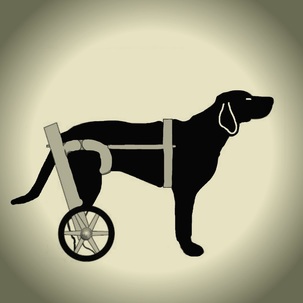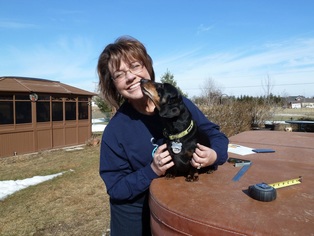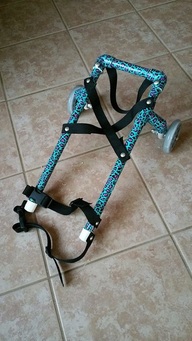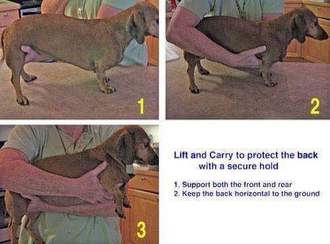In Loving Memory of
Let's get ROLLING!Live | Love | ROLL
Our goal is to enable people to build wheelchairs for their dogs using the resources posted here and the opportunity to ask for help when needed. The instructions are for both small and large dogs. Degenerative Myelopathy (DM) is a progressive disease of the spinal cord in older dogs. The disease has an insidious onset typically between 8 and 14 years of age. It begins with a loss of coordination (ataxia) in the hind limbs. The affected dog will wobble when walking, knuckle over or drag the feet. This can first occur in one hind limb and then affect the other. As the disease progresses, the limbs become weak and the dog begins to buckle and has difficulty standing. The weakness gets progressively worse until the dog is unable to walk. The clinical course can range from 6 months to 1 year before dogs become paraplegic. If signs progress for a longer period of time, loss of urinary and fecal continence may occur and eventually weakness will develop in the front limbs. Another key feature of DM is that it is not a painful disease. *********** Despite taking preventive measures, a Dachshund sometimes will suffer a disk herniation where the disk bulges out from between the vertebrae in the spinal column. If this happen to your dog, you must know what to do, and you must do it fast. However, you can't do anything if you don't know that your Dachshund is having a problem in the first place. Dogs have high pain thresholds and an instinct not to reveal when they're in pain. After all, in the wild, the obviously injured animal is the one that gets picked off by the predators. But if you pay attention, you can tell whether your Dachshund is in pain from a disk injury. Look for the following warning signs of spinal disk injury:
**Warning** It is wise to note that carts should NOT be used for a dog on conservative treatment for a disc episode (IVDD), until all 8 weeks of crate rest/medication have been completed to allow the disc to heal. Putting a dog in a cart before allowing for full recovery time, can cause further damage and also prevent normal recovery. |



